Annals of human history reveal that civilizations which put education and learning at the highest level of importance in their societies have dominated the world. As the importance of education and learning gets diminished in their civilization, so is their importance and leadership in world affairs. The rise and fall of the Greek, Roman, Egyptian, Indian, Chinese, Arab, and several other similar civilizations bear a testimony to this age-old precept. What is true for a nation, or a country, is also true for a group of people or a Society like ours – the EMC Society. If we, as a Society, desire to lead the current technology scene we must promote education and learning in our Society. We as a Society must strive to innovate the art of EMC science through advanced learning and education. In my decade of formal connection with the Society I have never been more excited and confident about our future than now. We have some very talented young men and women in our midst who are on a path to take the EMC science to greater heights and excellence. I am pleased to report that the Education and Student Activities Committee (ESAC) has been instrumental in propelling the interest in EMC engineering and making this field of science a worthwhile endeavor for our young men and women around the world. Our decade old programs such as the Fundamental Tutorials, the Experimental Demonstrations, the NARTE Exam preparation, and the University Grant program have continued to increase in their appeal and participation by the membership. Even the “new kid on the block” type programs such as the Best Student Paper Award, and the Best Student Design Competition have been accepted and have continued to increase in popularity at an exponentially increasing rate. The success due to the amalgamation of all these ESAC programs is palpable in the discussions and the knowledge base of the “customers” who profit by attending the events organized and conducted by the hardworking men and women of the ESAC. Every one of these officers of the ESAC (listed below) deserves recognition for his/her part of the success and for what their synergy brings to the overall success of the ESAC. Next time you meet one of them, show your appreciation for their dedication to promote excellence in EMC education and learning. We at ESAC are not satisfied with the success achieved thus far. We believe that there is always room for improvement. If you have any ideas that you would like to share with us to make ESAC better in accomplishing its charter, then please contact any one of the officers listed below or me. With your help and support we will be on our way to becoming the best committee in our Society and a model for other IEEE entities to follow. The Boston, Massachusetts Symposium was a great success for ESAC. With record attendance in every program and the new threshold of excellence set in both the Best Student Paper Contest, and the Best Student Design Competition, we are poised to launch yet another program called the “Partners in Education.” We need help in this area (more on this later). Let me now provide you with the details of the ESAC activities during the Boston Symposium for your reading pleasure and enjoyment.
 |
| ESAC Chair Maqsood Mohd (far left) calls the meeting to order on Tuesday morning in Boston. Discussions included past and future activities of the ESAC. |
Our big education events at the symposium included The Experimental
Demonstrations and the Fundamental Tutorial Workshop. Eleven years
ago, we started the Experimental Demonstration session, and ten
years ago we started the Fundamental Tutorial and NARTE Exam Preparation
workshops. A decade ago, on Mondays, the first day of the Symposium,
there was hardly any other workshop offered. Over the years the
choice for the attendees has grown to almost eight workshops on
Mondays. Thanks to our excellent speakers and presenters, our
Tutorial sessions have never lost their appeal and utility. The
real down to earth and fundamentals education is really in demand.
One of the reasons for this demand is that the environment in
which we live is becoming richer with man-made electromagnetic
energy and at the same time the susceptibility threshold of electronic
technology is decreasing. So, many are in a desperate need to
know how to deal with EMI and EMC today. Increasing participation
of novices in this field at seminars and symposia and even the
desire of seasoned professionals to brush-up and soak up every
tidbit of EMC knowledge is noteworthy. After all, knowledge is
power! This makes our Committee’s responsibility very important,
and we don’t take that lightly. We of the ESAC, as in the
past, will continue to strive to bring our members the best in
EMC Education. But, we are always open for new ideas.
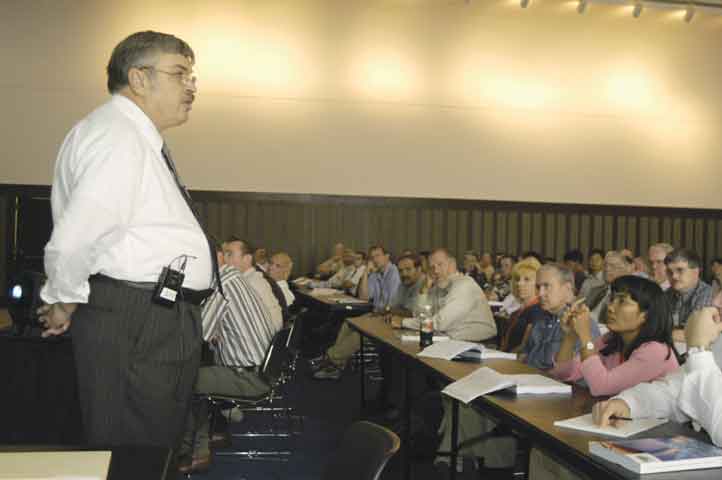 |
| Clayton Paul of Mercer University at Macon, Georgia presenting a special 90-minute tutorial to a standing-room only crowd on the “Concept of Dominant Effect in EMC Problems Diagnosis” at the Fundamentals Tutorial Workshop at the Boston EMC Symposium. |
Knowledge is power. And indeed education is the means to get the
knowledge. To seek knowledge is a birth right of every human being.
EMC professionals are included in this. It is never too late to
learn and seek education. Education is a verb. Our goal is to
become the premier education committee of the IEEE. This is your
Committee. We are here to help you and support your education
needs. We are striving to undertake unconventional and innovative
means to achieve our goals. Help us help you better. Let me update
you on the activities of various subcommittees. We welcome any
help and support that you may be able to provide to any of our
subcommittees. Please feel free to contact any of these subcommittee
Chairs directly.
Boston, Massachusetts Symposium 2003
The Boston, Massachusetts Symposium is now behind us; and it was
the best yet for educating and enriching EMC professionals. The
Boston Symposium Committee deserves thanks and appreciation for
the job well done. At this symposium, the Education and Student
Activities Committee achieved great success in several areas.
In the following paragraphs I have highlighted some of the events
that took place that you may find of interest.
Tutorials
It was another landmark year for the Fundamentals Tutorials Workshop.
Although the tutorials are primarily targeted for entry-level
engineers in the EMC field, quite a few seasoned engineers also
enjoy brushing-up on concepts that they might not have used in
a while. This year several noted experts provided the tutorial
material to help better understand EMC concepts and to better
design systems from an EMC point of view. Highlights of the Tutorials
included: introduction to EMC effects, system engineering concepts,
grounding for safety and noise reduction, use of dominant effect
in diagnosis of EMC problems, use of broadband filtering for suppressing
noise and a very informative panel discussion about challenges
EMC professionals face in their design work. If you did not attend
the workshop, we just wished that you were there.
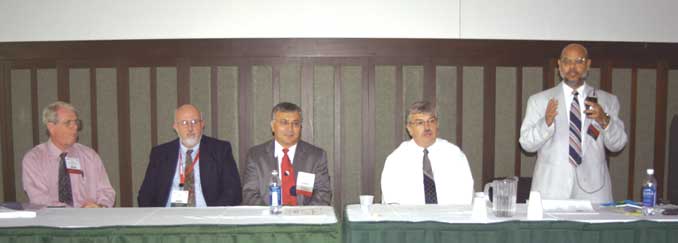 |
| Maqsood Mohd (standing on right) as the first speaker of the day initiates the panel discussion. Seated from left are other speakers of the day, including Tom Van Doren of the University of Missouri at Rolla, Daryl Gerke of Kimmel Gerke Associates, Jim Muccioli of X2Y Attenuators, and Clayton Paul of Mercer University at Macon, Georgia. |
As a celebration of the 10th anniversary of the Fundamental Tutorial
Workshop, two new features were added to the program. First, two
topics and two speakers were planned to present extended discussions
on the subject of prime importance to an EMC professional. Dr.
Tom Van Doren presented a 90-minute tutorial discussion on grounding
for safety and noise reduction and Dr. Clayton Paul presented
a 90-minute tutorial discussion on the concept of dominant effect
in the diagnosis of EMC problems. As expected, both IEEE Fellows
got rave reviews. Second, a unique feature this year was a panel
discussion at the end of the day. Even I was surprised how important
and beneficial the panel discussion was. The audience posed EMC
questions to one or more panelists and it was a real blast. The
people were glued to their seats even at 5:30 pm. We had to end
the program because of other planned activities. We would like
to thank all the speakers and the audience for attending and making
the panel discussion a great success. It is our intent to continue
with this feature in the second decade of this very helpful and
beneficial Workshop.
If attendance is any measure of success and popularity, the Fundamental
Tutorials were very successful. Throughout the day, on average
there was an impressive attendance of about 300 participants peaking
to 400. We had standing room only during the morning and for part
of the afternoon sessions. Like previous years, this year too
the first-time attendees comprised about 50% of the total attendance.
Thanks to all the speakers and the attendees who made the Fundamentals
Tutorials Workshop a great success. But there is one individual,
on this 10th year anniversary that we must recognize. He is Bob
Hofmann, whom you may recall was the 1994 Symposium Chair in Chicago.
It was his willingness to take the risk then and allow the ESAC
to meet this challenge (while there were many skeptics in the
ranks) that paved the way for the torch of learning and EMC knowledge
to burn brighter than ever. In August 1993, he gave the green
light for this Workshop and the ESAC Tutorial subcommittee went
to work and has not stopped ever since. Many EMC professionals
throughout the last decade have been enjoying the fruits of his
risk-taking. Over the last decade, at least 6000 professionals
and novices of our Society directly benefitted from this Fundamentals
Workshop. Thanks Bob for your visionary leadership. The tutorial
subcommittee is busy planning for another exciting and informative
session during the Santa Clara Symposium. If you would like to
propose a topic or a speaker for the Santa Clara Symposium, email
your comments and ideas to maqsood@ieee.org.
Experimental Demonstrations
This is another popular and “educational” activity we
do as a committee. A variety of EMC concepts are demonstrated
experimentally during the symposium to educate the symposium attendees.
This was also the third year for the demonstrations of EM modeling
and simulation (M&S) concepts. During the main three days
of the symposium a total of 20 concepts were demonstrated that
sometimes might be classified as abstract or black magic. Many
happy souls were pleased to learn these concepts during these
demonstrations. Their doubts changed into convincing beliefs.
 |
| Tom Van Doren presenting a 90-minute special topic on “Grounding for Electrical Safety and Noise Reduction” at the Fundamentals Tutorial Workshop at the Boston EMC Symposium. |
Like the previous two years, the demonstrations were at the best
location in the symposium. The Boston Symposium committee worked
closely with the ESAC to make this a success. The experiments
were solicited from a “Call for Experiments” and the
Symposium committee also arranged for the equipment for the presenters.
In the past, the ESAC used to do everything in this regard. This
has been a successful transition. We are not totally in autopilot
mode yet, but we are making it as a part of the main annual symposium
committee function. A minimal interaction will still be with the
ESAC for a foreseeable future, especially in an advisory role.
The ESAC representative who has helped champion this effort is
Andy Drozd. We want to recognize the invaluable service he has
provided over the years to the great success of this wonderful
program. Our thanks are due to the Boston Symposium committee,
especially to Bob Dockey, for a fine job on arranging the Experimental
Demonstrations. Our thanks are also due to very supportive vendors.
If you would like to demonstrate an experiment at the Santa Clara
symposium, respond to the Call for Experiments (please see Demonstrations).
If you would like to demonstrate an EMC modeling and simulation
concept at the next symposium in Santa Clara, please contact Andy
at andro1@aol.com.
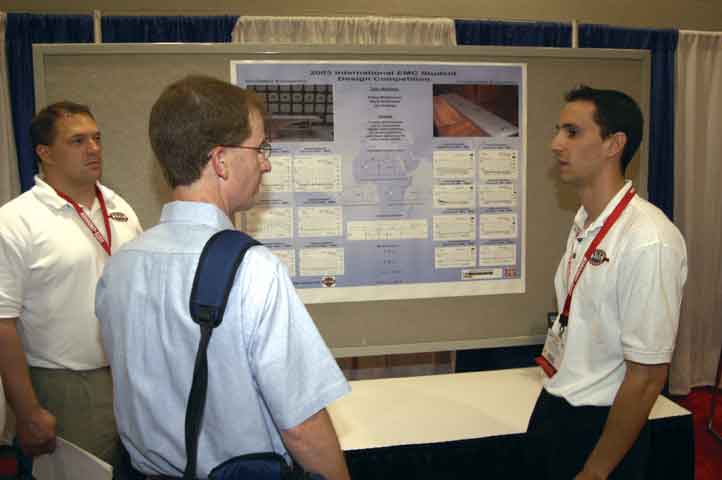 |
| 2003 Best Student Design Winning Team explaining their design to a Symposium participant. Students from the University of Wisconsin-Milwaukee are Wayne Stollenwerk (left) and Antony Mihalopoulos (right). Not shown is Jon Kobleske. |
NARTE Activities
As during the past 10 years, Dr. James Whalen has conducted the
workshop for engineers and technicians who prepare to take the
National Association of Radio and Telecommunications Engineers
(NARTE) examination to certify as EMC engineers and technicians.
Dr. James Whalen is also a part of the overseeing committee of
the EMCS that would review the question pool along with several
folks from the technical committees (TCs).
At the NARTE examination on Friday, 18 engineers and technicians
sat for the exams. The word from NARTE is that 67% of the participants
passed the exams. Our congratulations to all the successful applicants,
and welcome to the ranks of certified NARTE professionals. Our
thanks are due to Dr. James Whalen for championing the cause of
“preparing for the NARTE exams.” Due to his selfless
service to the ESAC and by conducting this workshop during the
last 10 years, he has educated almost 400 engineers and technicians,
out of which 236 took the test and 164 passed in the first attempt
to become NARTE certified EMC engineers and technicians. This
is a whopping 70% success rate.
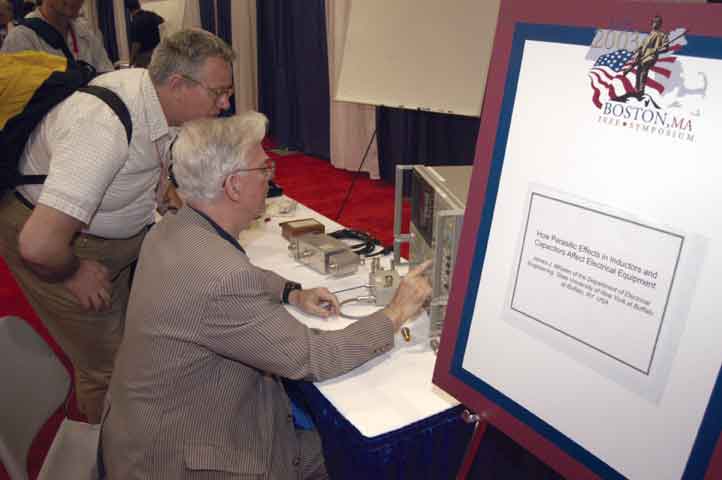 |
| Jim Whalen (seated), the NARTE Workshop Subcommittee Chair, conducts an experiment to demonstrate the nonlinear behavior of passive components. |
University Grant
John Howard heads the university grant committee. His committee
has been successful in finding a winner for this grant in 2003.
This year we had responses from around the world requesting the
grant money. The grant is provided to an institution that is on
the verge of offering an EMC course. The grant money is used as
seed money to start an EMC course as an established part of the
curriculum in the Electrical Engineering department. The grant
is open to all universities in the world. For more details, contact
John Howard at jhoward@emcguru.com.
This year’s winning school is the Citadel in Charleston,
South Carolina. Congratulations to Dr. Thomas Jerse of the Electrical
Engineering department.
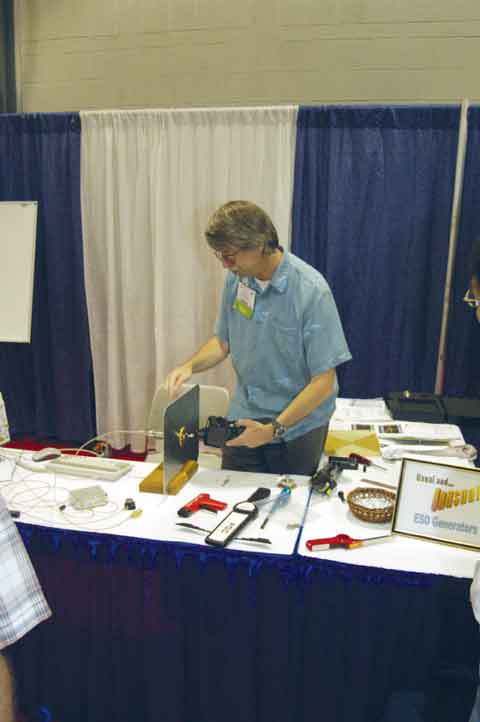 |
| Ken Wyatt of Agilent Technologies (photographer for ESAC photos) demonstrating unusual ESD generators. |
University Survey
Professor Antonio Orlandi is the Chair of this subcommittee. The
mission of the university survey committee is to survey the universities
and collect data about the EMC course offering, student population,
modeling and simulation usage, etc. The data collected will help
EMCS and its members in various ways. Information will be useful
for prospective students, industry, employers etc. If you have
not already done so, please, complete an online survey by going
to the website https://dau.ing.univaq.it/art.
If you know of a school or a college that has not participated
in the survey, please encourage them to complete an online survey.
For more information on this activity please contact professor
Orlandi at orlandi@ing.univaq.it.
Student Design Contest
This has been one of the most exciting areas of growth during
last few years for our Committee. This effort epitomizes the proverbial
synergistic cooperative effort between industry and the Society.
Ahmad Fallah is the Chair of this effort. This was our fourth
year and we have learnt a few more things this year. We will still
learn and fine-tune the process as we go. If you would like to
join this bandwagon and help advance and fine tune this contest,
then contact Ahmad Fallah. In this competition parts of a circuit
(designed by Fallah) in the form of a kit are sent to the professors
at the universities. The kit is yours free for the asking. This
year almost 14 kits were sent around the world. We received eight
entries. The entries were evaluated against a set of criteria
provided in the information packet sent with the kit. The evaluators
are EMC engineers from industry and academia who do not have any
conflict of interest.
The 2003 EMC Student Design Competition was a major success! In
the 2003 competition, we had an excellent wining entry. The winning
entry team is from the University of Wisconsin-Milwaukee. The
team consists of three members Antony Mihalopoulos, Jon Kobleske,
and Wayne Stollenwerk. The team members presented an impressive
poster paper presentation in the demonstration area. The team
qualified to receive $900 in cash and one student from the winning
team received an expense-paid trip to attend the 2003 IEEE Symposium
on EMC in Boston, Massachusetts. The most important reward for
the participants, however, was the experience of applying their
EMC design knowledge to a real-life problem and explaining the
EMI-reduction techniques to scores of professionals at the symposium.
If you are a student and want to participate in the 2003 EMC Student
Design Contest, then all you need to do is have your professor
contact Ahmad M. Fallah at (763) 694-2148 or via email at ahmadfallah@ieee.org,
and request a design kit and a copy of the competition rules by
January 31, 2004. Follow the rules and submit a winning entry.
Get started early and remember, the early bird gets the worm.
The price is right; the winner receives a free trip to the Santa
Clara EMC symposium and $900 US dollars! Not bad!
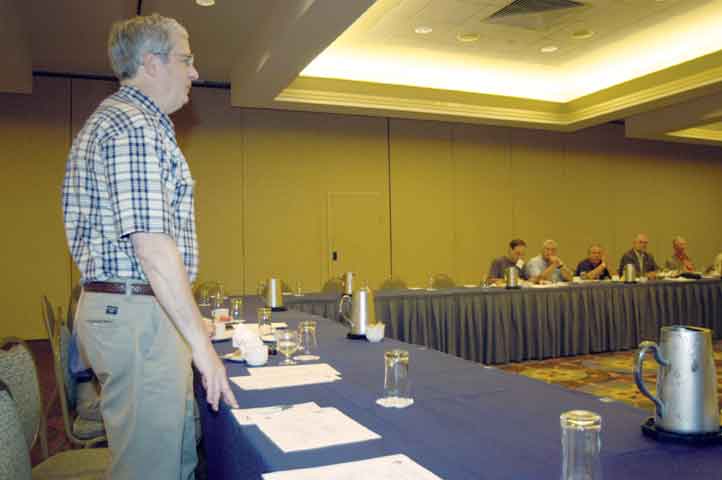 |
| Dick DuBroff of the University of Missouri at Rolla presenting the report on Experiments Manual II to the ESAC Committee at their Tuesday morning meeting in Boston. |
Experiments Manual On-line
Dr. Jim Drewniak and Dr. Dick DuBroff are leading this effort.
However, Dr. Dick DuBroff is the “go to person” in command
that is now expanding this activity to additional manuals. The
first Experiment Manual published by the Education and Student
Activities Committee is on the web site at: https://www.ewh.ieee.org/soc/emcs/pdf/EMCman.pdf.
If you have an Adobe Acrobat Reader, you can download the entire
manual from this site. If you don’t have the Adobe Acrobat
Reader, it can easily be downloaded from the site: https://www.adobe.com.
Jim and Dick can still use some help from a volunteer who can
do the follow-up work of soliciting and arranging the new experiments.
If you are interested in broadening your career horizons, contact
Jim or Dick or any other officer of the Education and Student
Activities Committee. Dick DuBroff has been instrumental in preparing
the second volume of the Experiments manual. If you are interested
in getting more experimental material, then go to the site https://www.ewh.ieee.org/soc/emcs/edu/exper.htm
for Experiment Manual Volume II and additional experiments.
Education Committee Web Site
Randy Jost of Utah State University is in charge of this subcommittee
as he assumed the role of the Secretary of the ESAC officially
in August 2003. As the duties fall under secretary of the committee,
Dr. Jost has done a superb job. Take a look at our web site at
https://www.ewh.ieee.org/soc/emcs/emcsedu.html.
If you have any ideas how to improve our web site, please contact
Randy or me.
Student Activities
Ahmad Fallah is the new Chair of this subcommittee. The mission
of this committee is to reach out and interact with all students
around the world. Primarily, the focus is on working with student
chapters in four areas: The Awareness of EMC, Student Paper Contest,
The President’s Award, and the Student Design Contest. The
first order of business is to introduce the student chapters with
EMC educational materials. If you have any ideas or wish to volunteer,
please contact Ahmad Fallah (ahmadfallah@ieee.org)
or me (maqsood@ieee.org).
Student Award Winners at the 2003 EMC Symposium
In addition to the Best Student Design Award, each year the Education
and Student Activities Committee also awards the Best Student
Paper Award at the annual Symposium event. The winning entries
for this year are as follows:
Best Student Paper Contest: “Electromagnetic Coupling
Through Perforated Shields Due to Near Field Radiators,”
by Ms. Shabista Ali of the Department of Electrical and Computer
Engineering, University of Delaware. Her award included $900 US
and an expense paid trip to the Boston Symposium. Congratulations
to Ms. Shabista Ali for her excellent and innovative paper about
near-field effects of radiation.
Best Student Design Contest: The winning entry was from
University of Wisconsin-Milwaukee. The team members from UWM are:
Antony Mihalopoulos, Jon Kobleske, and Wayne Stollenwerk. The
three members of the UWM team share a cash award of $900 US. The
team members got an expense paid trip to the Symposium in addition
to the cash award. This year, all the team members were able to
attend the symposium because they kept the total expense under
the budgeted $2,100 US. Congratulations to these students, their
team members, their professors, sponsors, and the universities!
Video/CD-ROM Based Educational Material
Production
The task of this committee is to produce educational material
in an appropriate and useful medium to the EMCS membership. Dick
Ford is the Chair of this committee. This year Dick has completed
a milestone in the video productions arena. A CD-ROM is produced
that has three experiment demonstrations on it. The experiments
are as follows. First is a demonstration of “EMC Aspects
of Magnetic Field Coupling of Current Loops,” by Dr. Jasper
Goedbloed of Geldrop Netherlands. He is a professional of great
repute who worked for a number of years and retired from the Phillips
Company in the Netherlands. He has authored an excellent book
on EMC and has been a featured presenter in the ESAC Fundamental
Tutorial Workshop and the Experimental Demonstrations over the
years. Second is the demonstration of “ESD and EMI in Printed
Wiring Boards,” by Doug Smith. Doug is well known and respected
throughout the EMC and ESD communities for his high frequency
measurements expertise. He worked for a number of years and retired
from AT&T Bell Labs. He has authored an excellent book on
EMC and has been a featured presenter in the ESAC Fundamental
Tutorial Workshop and the Experimental Demonstrations over the
years. Third is the demonstration of the “Effects of Pulse
Rise/Fall Time on Signal Spectra,” by Professor Clayton Paul
of Mercer University, in Macon, Georgia. Dr. Paul has been an
icon in the EMC Society for a number of years. He is an IEEE Fellow,
author of the first EMC book suitable for an academic course,
and he has propelled the science of EMC engineering from the “Black
Magic” arena into scientifically computable and understandable
areas. He retired from the University of Kentucky after teaching
there for a number of years and is now the Sam Nunn Eminent Professor
of Aerospace Systems Engineering at Mercer University in Macon,
Georgia. He is a long-term contributor to the ESAC Fundamentals
Tutorial Workshop and Experimental Demonstrations programs. He
authored and edited the first EMC Experiments Manual produced
by the ESAC.
You don’t want to miss this CD if you are interested in learning
the concepts and actually conducting an experiment to duplicate
the concepts presented on it. This copyrighted material is available
to our membership through the ESAC. There is a plan to provide
these CDs to needy members. They will be provided to EMC Chapters,
professors, and other educators. To get a copy of this CD, please
contact Bob Nelson, Dick Ford or myself. What we do in this committee
has a far-reaching impact in the 21st century. The educational
material and the CD that we produced will be valuable to EMC students
and professionals alike for a long time to come.
EMC Outreach
The task of this committee is to produce educational material
in appropriate and useful medium to the EMCS membership. The outreach
consists of three segments: The K-12 grade population, the college
student population, and the professional members who are not fulltime
students. We are beginning to devote our efforts and resources
to the K-12 population segment during the coming months. If you
have any ideas how to go about doing this job more effectively,
please contact me at maqsood@ieee.org.
Education and Student Activities Officers
Some changes have occurred during the Symposium. Contact any one
of the following to become a part of the ongoing innovation in
EMC engineering through education.
NARTE BOD Liaison
David Case, dcase@telxon.com
Demonstrations
Andy Drozd, a.l.drozd@ieee.org
Experiments Manual II
Dick DuBroff, dubroff@ece.umr.edu
Student Activities
Ahmad Fallah, ahmadfallah@ieee.org
Student Design Contest
Ahmad Fallah
Video Productions
Dick Ford, dford@radar.nrl.navy.mil
Secretary/Webmaster
Randy Jost, rjost@ece.usu.edu
University Grant
John Howard, jhoward@emcguru.com
EMC Outreach
Maqsood Mohd, maqsood@ieee.org
Tutorials
Maqsood Mohd
Vice Chair
Bob Nelson, Robert.m.nelson@ndsu.nodak.edu
University Survey
Antonio Orlandi, orlandi@electtrica.ing.uniroma1.it
NARTE
Jim Whalen, jjw@eng.buffalo.edu
I would like to express my personal thanks and appreciation to
each of these officers who tirelessly work throughout the year
to bring the very best in EMC education materials, workshops,
demonstrations, tutorials, and student contests at every symposium
to all the members of the EMC profession throughout the year.
When you email them, contact them, or see them during a symposium
express your appreciation for volunteering their valuable time
for the EMCS and the Education and Student Activities Committee.
EMC
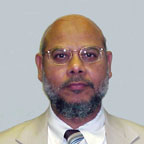 Education
and Student Activities Committee
Education
and Student Activities Committee